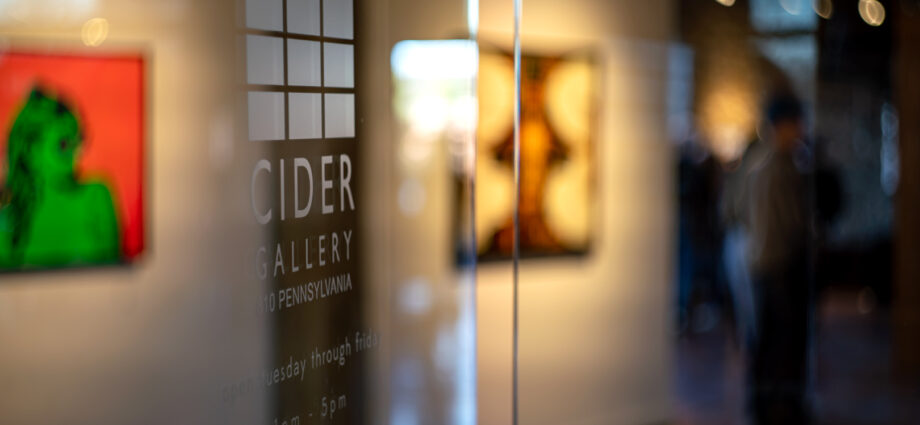Cider Gallery premiered an exhibition of works by renowned photographer, Cara Romero (Chemehuevi) and local artists – Miranda Kaite, Dillen Peace, and Laura Kingston – for Final Fridays in Lawrence, Kansas. The event also included food from local vendors and dance performance.
The three artists were able to refine their photography under the mentorship of Romero last year through the 2021-2022 Indigenous Arts Initiative (IAI) “a mentorship-based residency program aimed at supporting Native artists and amplifying the visibility of Indigenous culture.” The images they worked on will be shown alongside Romero’s work at Cider Gallery throughout the month of April.
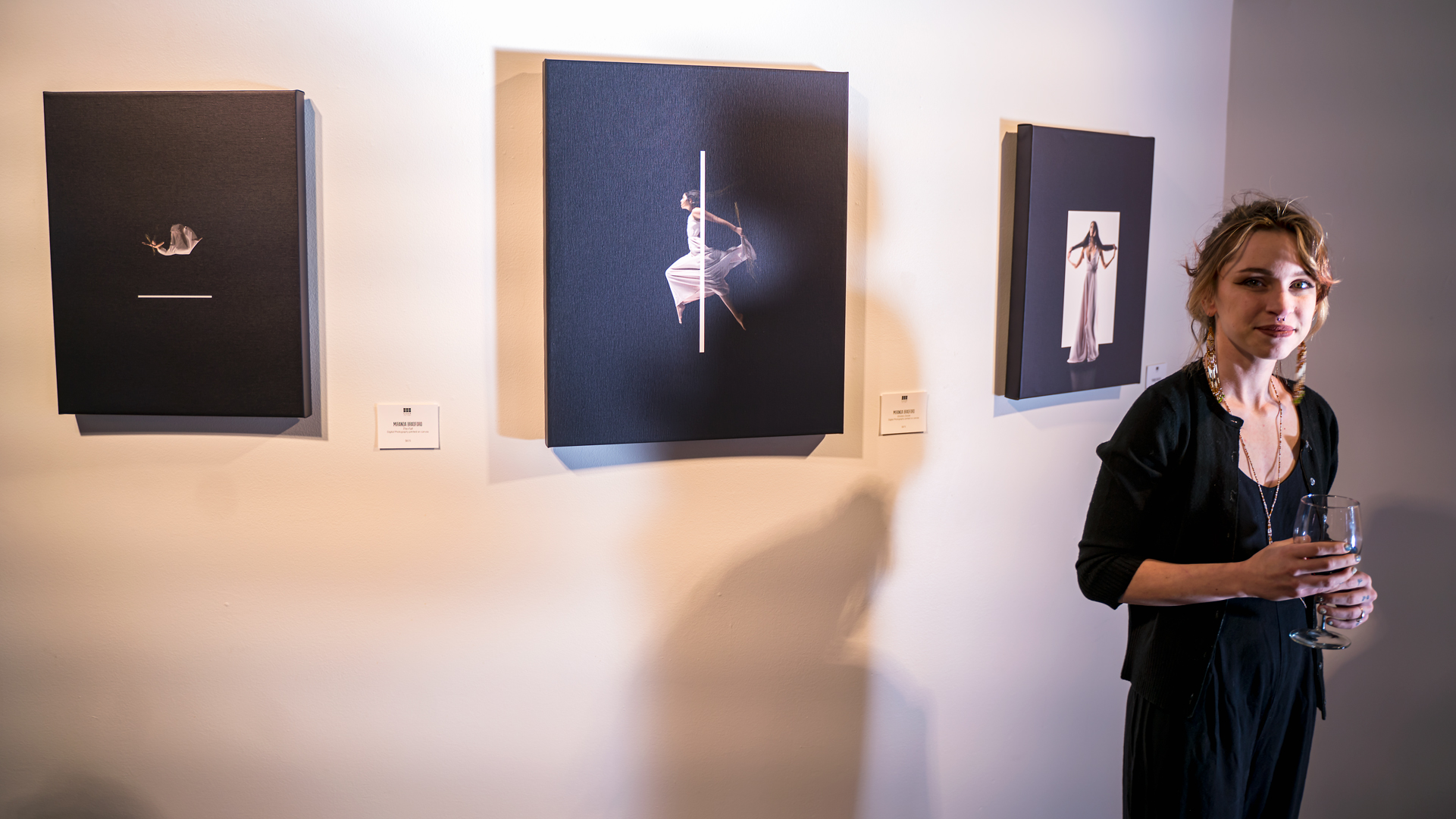
Kaite (Citizen band Potawatomie), a senior at Haskell Indian Nations University (HINU), gave her thoughts and experience with the mentorship.
“(Romero) gave us the rundown on the basics of photography and worked with us in each of our individual directions – each of us have unique styles and goals in our art.” Kaite continued, “…not only did she help us with our inspiration, but she also taught us how to market ourselves and to bring our art to fruition. All the important things to being a professional artist: from lighting, shutter speed, and aperture; and led us all the way to pricing our work, making additions, mediums to print on – she really led us from start to finish and was very thorough with it.”
She then spoke on what inspired her photography, including her background of modeling to learn the art of light and body movements. “Instead of being the subject, I wanted to create the art. Starting with self-portraits, I moved to shooting personality portraits… With those base knowledges, Romero helped me move into more of the fine art aspects.”
With her piece, “Worlds Divide”, Kaite “…wanted to capture the emotion and personality of Jula (Harjo) because she is very powerful (and) has such a strong presence”. Her piece is inspired by the stories of Sky Woman as told by Robin Wall Kimmerer – whom is also Citizen Potawatomie – in her book, Braiding Sweetgrass.
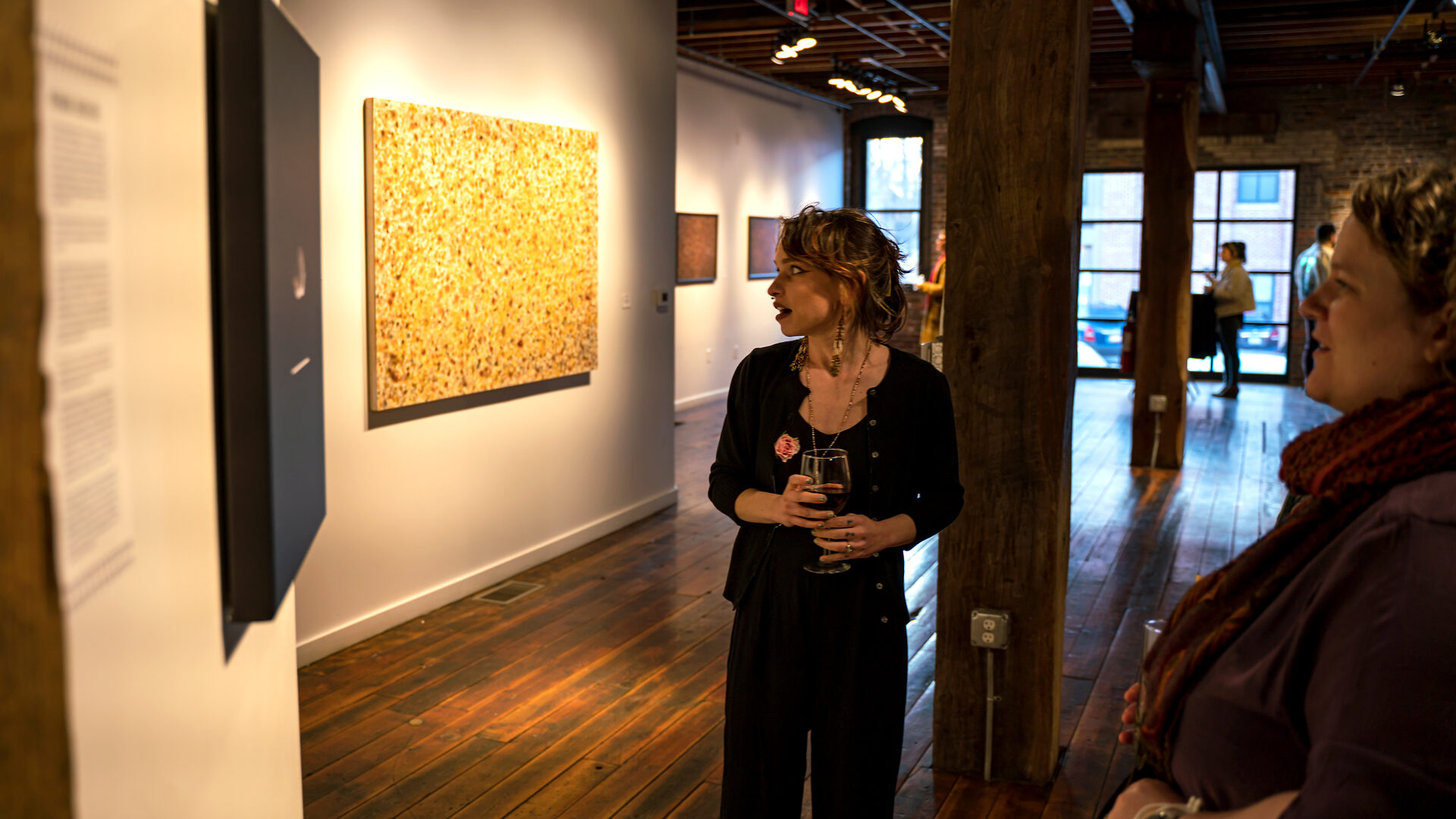
Kaite goes on to say “I entwined my Indigenous self into my artwork for the first time. It really took my work to another level… that’s why the photos are so powerful; I injected my experience as a native person into the photos.”
Aside from other gallery shows around the area, including 785 Art gallery in Topeka and Kansas City Public Library, Kaite hopes to explore the style more with sets that complement “Worlds Divide” and collaborate with more Indigenous and people of color.
Kaite also gave advice for upcoming photographers and artists. “Just get out and do it!… take pictures of things you find beautiful, take pictures of things you find interesting, take pictures of things that evoke an emotion in you. Once the ball starts rolling, you’ll feel yourself gaining more knowledge and being able to express the things you want to express… You can start with your phone and whatever else you have access to.”
And advice for Haskell students. “Haskell has such a nurturing environment and so many resources and so many avenues to make us successful. Take advantage of those programs, resources, and extra-curricular activities; those are just going to build you as a person and help build your resume, professionally. If you see an opportunity that interests you, take it because you will not get those opportunities handed to us in the future.”
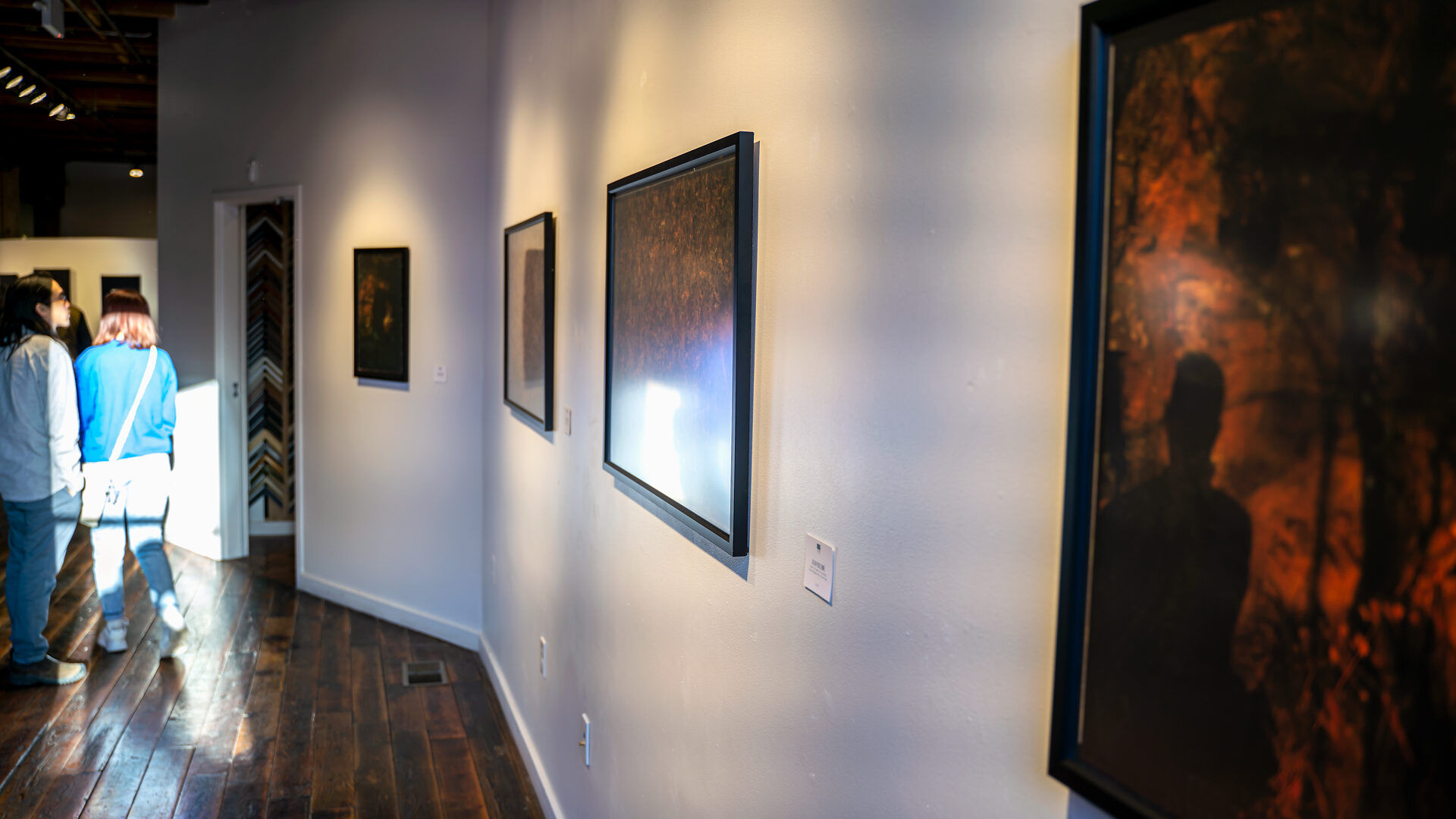
Dillon Peace (Diné and Master’s student at KU), is another Indigenous artist who took part in the IAI workshop. Their approach to photography is a bit unique with the foundation of their artwork coming from the relationship and connection to the land.
“So what inspired these was trying to connect to this landscape, trying to understand how I belong here… as a human being.” Peace continued, “I started incorporating natural Earth pigments into my work because I wanted it to connect to the Earth more… to make my work about that relationship and about that connection. And so I started just taking the pictures… as I navigated this landscape and just sort of familiarize myself with it. I felt like I was connecting to here… I was grounding myself and I was trying to be more present with where I am and understand how I fit into this place, how I can connect, and how I could insert that into the work. I feel like that’s what I need just as a being, and that’s what I want my work to be about, is just that.”
“I started incorporating natural Earth pigments into my work because I wanted it to connect to the Earth more… to make my work about that relationship and about that connection.“
Dillen Peace, 2022
He goes on to iterate his biggest learning experience in the workshop, “I think it’s as much important to incorporate aspects of who you are into the work as it is to think about the fundamental and technical aspects of the material process. It is important to know the history of photography or the history of painting, but for me, I want it to be more about the history of the people I come from, the history of the landscape, the history of myself, and how that all informs how I’m living today.”
Laura Kingston, a local photographer who works with KU college access programs and communications within the KU Powwow, was another mentee of the IAI workshop.
“During this experience, I got to learn how to take portraits, kind of like editorial portraits for magazines and how to work with lights, because typically I just work in whatever setting I’m taking pictures in. It’s a really great opportunity to learn how to use light and how to make people stand and feel comfortable in front of a camera.”
As a non-Indigenous person, Kingston hopes to make an impact on Indigenous communities and members in respects to representation and breaking stereotypes.
“I see a lot of Native students and students of color get tokenized, and KU marketing tells them to look and show up in spaces in a certain way. And it’s really frustrating… I didn’t ask [the subjects] to wear regalia. I didn’t ask them to bring their tribal flags. I just said, show up in what makes you confident. It’s kind of just breaking a lot of higher ed stereotypes of what Native students look like on campus.”
“I didn’t ask [the subjects] to wear regalia. I didn’t ask them to bring their tribal flags. I just said, show up in what makes you confident. It’s kind of just breaking a lot of higher ed stereotypes of what Native students look like on campus.”
Laura Kingston, 2022
Kingston gave some advice for Indigenous students who are thinking of applying to KU.
“Talk to the brand-new office of Native American Initiatives. KU wants, authentically, to support native students and they’re putting money to create new positions… They’re wanting to support students through graduation and in graduate school… These opportunities that you might not feel like you deserve, you do deserve. And to just take those risks and do what you can to take opportunities and give back to your community.”
Kingston gave her last thoughts and appreciation with the IAI workshop.
“The [KU and Haskell] students who were excited about this project and showed up and trusted me to take their picture, I really appreciate their willingness to work with me and to let me learn how to do lighting and everything while they stood in front of a camera because it takes a lot of bravery to stand in front of a camera.”
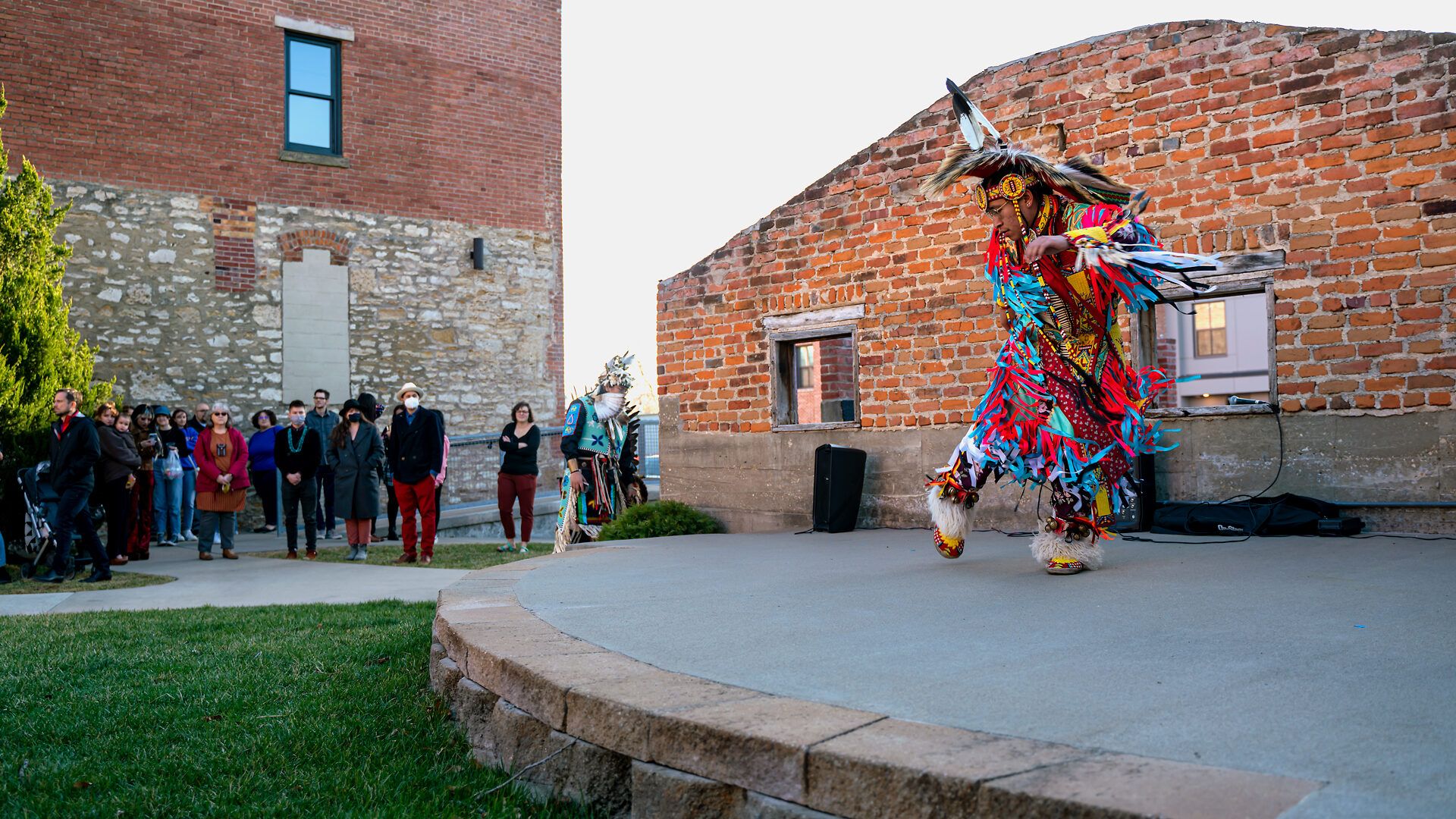
This event was made possible by a collaboration from KU First Nations Student Association, Kansas Indigenous Arts Initiative, and Lawrence Warehouse Arts District.
The event is also a part of the larger 2022 KU Indigenous Cultures Festival. There will be more events leading up to the 2022 KU Powwow and Indigenous Cultures Festival on April 9; including a conversation with IAI mentors Cara Romero and Diné filmmaker Nanobah Becker on April 3, and Red Sky Performance:TRACE at the Lied Center of Kansas on April 8, consisting of contemporary dancers whose work is inspired by Indigenous (Anishinaabe) sky and star stories. The full schedule is available at https://fnsapowwow.ku.edu.

